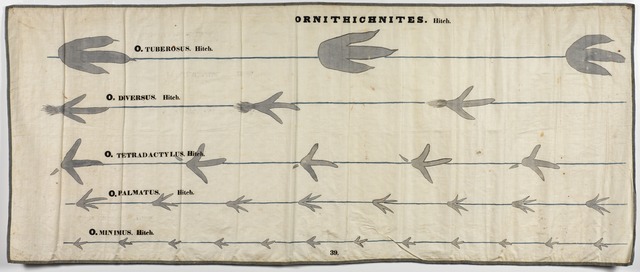archive
Dr. Marta Werner Awarded ORS Grant for "Dickinson's Birds: A Public Listening Project"
Loyola's Office of Research Services has awarded a Research Support Grant to Dr. Marta Werner, Martin J. Svaglic Chair in Textual Studies. The grant will fund her digital project, "Dickinson's Birds: A Public Listening Project."

Scientific illustration by Orra White Hitchcock (1796-1863), whose life in Amherst overlapped with Dickinson's. Amherst College Archives & Special Collections.
Werner describes the project as follows:
Of the more than 500 species of birds known to nest in the fertile Connecticut River Valley or pass through it on their long migrations, Emily Dickinson named a relatively small number of them, possibly just those she heard from her window or observed in her garden: robins, bobolinks, sparrows, jays, crows, eagles, cardinals, orioles, larks, phoebes, black- and blue-birds, lapwings, hummingbirds, owls, eider ducks, swans, whippoorwills, partridges, cuckoos, doves, linnets, and wrens. Yet birdsong is arguably the most constant evanescent sound she recorded through writing in an age before the technologies of recording had been invented.
Following the searching work of Andrew Whitehouse (2015) in his anthropological investigation of the significance of bird sounds to contemporary people’s sense of place and time as well as of the ways in which the diminishment of bird sounds triggers anxieties innate in the Anthropocene’s vision of nature’s finitude, “Dickinson’s Birds: A Public Listening Project” undertakes the identification, archiving, and un-archiving of bird sounds in Dickinson’s text-, land-, and sky-scapes to enlarge our understanding of the relationship between Dickinson’s bird-poems, her evolving sense of emplacement, and her intuition of the long approach of the Anthropocene through the widespread ecological changes of the Industrial Revolution, while also encouraging us to sound out our contemporary experience of loss and mourning for a planet now suffering profoundly from the effects of climate change, loss of biodiversity, and environmental degradation.
Ultimately, however, this is an experiment in hope rather than an exercise in despair. To this end, “Dickinson’s Birds” also attends to those soundings, however faint, that propose new pathways for moving forward in the altered world we have createdand of mapping the ways in which our sharp expectancy of the Sixth Mass Extinction may lead to greater attunement to and ethical interaction with the beings with whom we share an uncertain future. Here the archive itself is re-imagined not as a repository of static and isolated information essential for the preservation of human history but as an open, living environment that shelters traces of both the human and the non-human even in their imagining of their own endings and new beginnings.
The $10,000 grant will allow Dr. Werner to further explore the rich possibilities of a living archive, and to be joined by programmer Abraham Kim and Digital Humanities M.A. student Caroline McCraw in developing timelines and deep maps that situate Dickinson's bird manuscripts within the ecological context that inspired them.
For more of Werner's work, see Radical Scatters: Emily Dickinson's Late Fragments and Related Texts, 1870-1886 or her interview with the Poetry Foundation.

